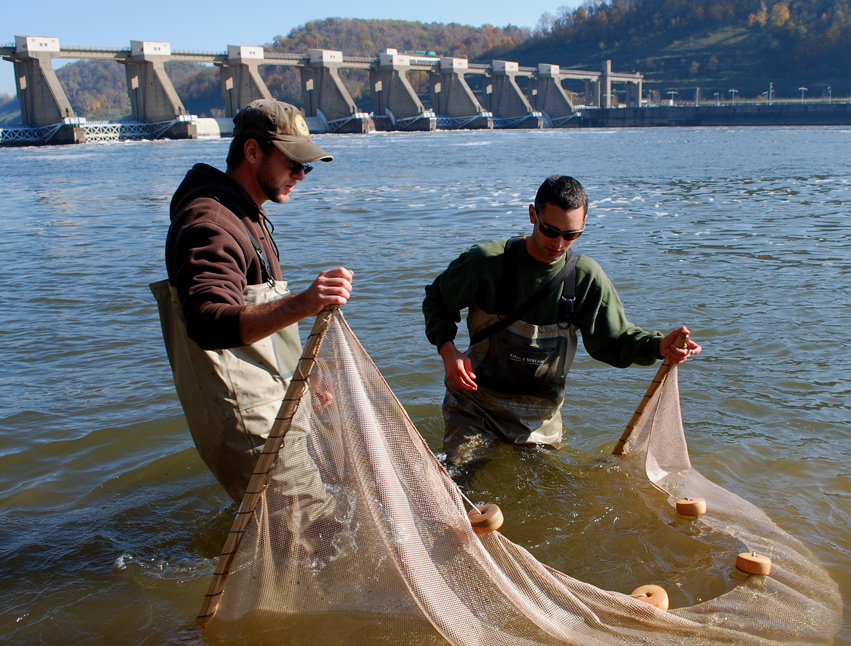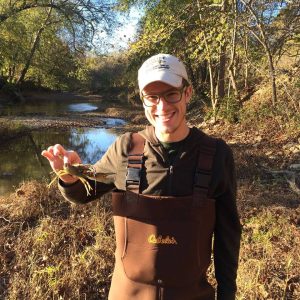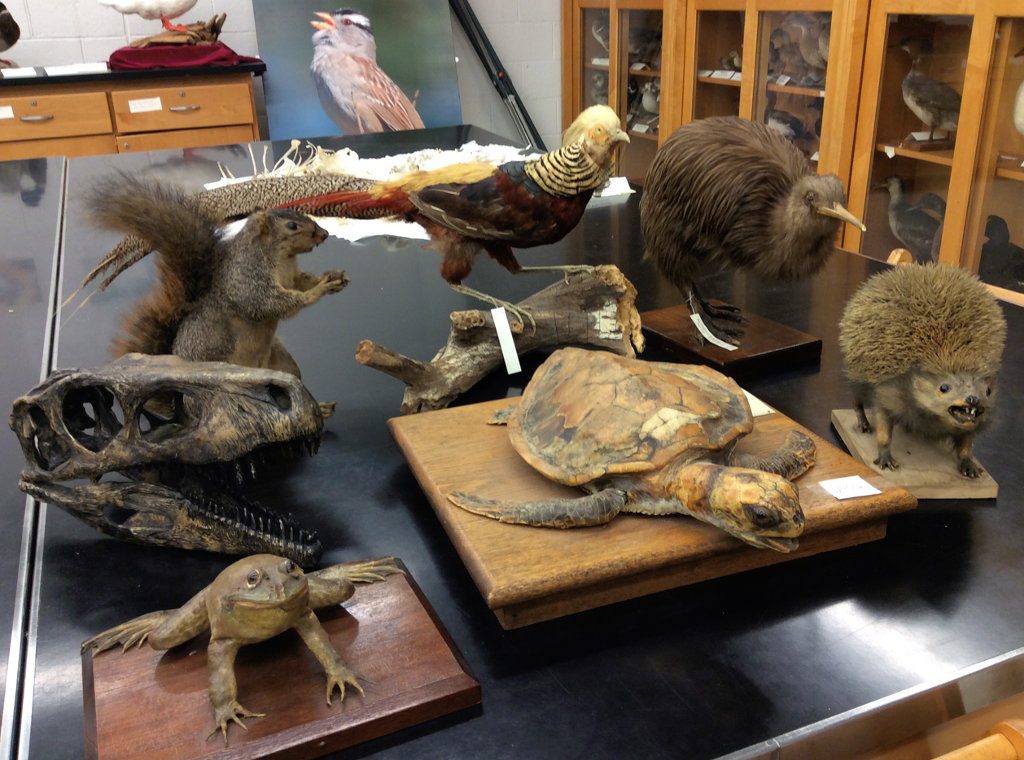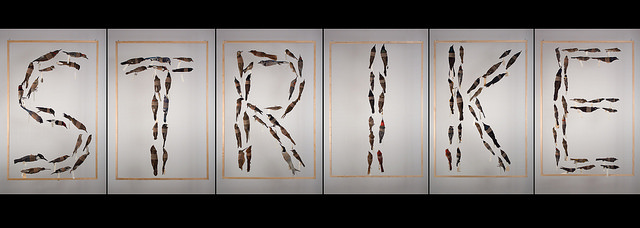 MaLisa Spring, State Coordinator for the Ohio Dragonfly Survey, sat down with us to talk about the Ohio Dragonfly Survey and its focus – dragonflies and damselflies!
MaLisa Spring, State Coordinator for the Ohio Dragonfly Survey, sat down with us to talk about the Ohio Dragonfly Survey and its focus – dragonflies and damselflies!
Hilary: “Tell us about yourself!”
MaLisa: “I completed a Bachelor’s in Biology with a minor in Spanish at Marietta College, Ohio. While I was there I did a couple of research projects related to insects and completed my senior thesis on bee diversity. It was then that I decided that I wanted to go to grad school, and I ended up attending OSU, where I received my Master’s degree in Entomology.
I worked with native pollinators for my undergraduate, but I also did a small project on lady beetle diversity and completed an internship on insect diversity. Overall, I’m just broadly interested in entomology and so when there was a mention of a dragonfly survey coming up and that they were interested in hiring someone for the survey, I was all for it – it sounded great! I then landed the job as the state coordinator for the Ohio Dragonfly Survey in May of 2017.
Hilary: “What is the Ohio Dragonfly Survey and what is its goal?”
MaLisa: “The Ohio Dragonfly Survey is a citizen science project with the goal of getting people outside, to notice dragonflies and damselflies, and to submit their observations to the survey via iNaturalist.org. Our goal right now is to figure out where species are throughout the state and to document the status of the threatened and endangered species. Ohio has 167 species of dragonflies and damselflies and we have 23 species that are state-listed as either endangered, threatened, or a species of concern, but there could be several more species added to that list. Additionally, the Hines Emerald (Somatochlora hineana) is the only federally endangered species in our state and it hasn’t been seen since at least 1989, so it might be extirpated (locally extinct, but surviving elsewhere).”
Hilary: “What are some of the greatest threats to dragonflies?”
MaLisa: “There are many threats to dragonflies and damselflies. Habitat loss and degradation are two of the biggest ones. Compared to the species richness between now and say the 1950s, there’s a huge difference. For example, Ohio used to have the Great Black Swamp, a several county-large swamp up in northwestern Ohio, but it was drained and turned into agricultural fields. Reducing hectares of wetlands into ditches created a vastly different habitat for the dragonflies and damselflies of this region, resulting in a significant change in the number of species that used to live here.
Other challenges are pesticides and especially herbicide run off. Herbicides affect plants and certain species of dragonflies and damselflies lay their eggs inside of specific plants. If those plants aren’t there for them to lay eggs in, then the species cannot survive. They also need plants at the edge of water, so if people are mowing down plants at the edge of ponds or other ideal aquatic habitats, then the dragonflies and damselflies don’t have anywhere to emerge after their larvae stage to spread their wings to dry, and so they die.”
Hilary: “What is the life cycle of a dragonfly or damselfly?”
MaLisa: “Immature dragonflies and damselflies, also referred to as water nymphs (naiads) or larvae, reside in the water or aquatic systems, where they can live anywhere between 3 weeks to several years (it depends on the species). Some species are migratory, so they migrate to and from Ohio, but others overwinter in Ohio as larvae in the water systems and then emerge in either the spring or summer (again, it depends on the species) as adults, where their lifespans can range from two weeks to up to a couple of months.
Hilary: “How can you tell a dragonfly and a damselfly apart?”
MaLisa: “Dragonflies and damselflies are in the order odonata and are divided into two separate groups, Anisoptera and Zygotpera. You can differentiate the two based on the wing positioning for the most part, but not always. Dragonflies tend to hold their wings out like a biplane, whereas damselflies tend to hold their wings behind their back like a sailboat.
Another way to differentiate them is based on their size. Most dragonflies are larger than damselflies. But again, there’s an exception to the rule with the body of some damselflies being longer than that of some dragonflies. If you want to get into the nitty gritty to tell them apart, you can look at their eyes to see how separated they are from each other. All damselflies have their eyes well separated on their head, whereas most dragonflies (excluding the Clubtails) have their eyes at least touching.”
Hilary: “For the public to get involved in the survey, do they need to collect specimens?”
MaLisa: “For the most part, we’ve learned that the public doesn’t want to collect specimens, which is okay as photographing them instead is perfectly acceptable. However, if they are interested in collecting specimens we ask that they look on our webpage and follow our collection protocols.”
Hilary: “Will you be at the Open House for the Museum of Biological Diversity on April 7th?”
MaLisa: “I will definitely be here for the Open House event, if anyone wants to ask me any dragonfly questions!”
To learn more about the Ohio Dragonfly Survey, access this link: http://u.osu.edu/ohioodonatasurvey/
Contributing to the survey is as easy as taking photos of dragonflies and damselflies and submitting them to iNaturalist.org! Learn more here.
Want to learn more about dragonflies and damselflies? Check out this page for upcoming talks, presentations, and community events. Or download a guide to dragonflies and damselflies of Ohio from the Ohio Division Wildlife.
 About the Author: Hilary Hirtle is the Faculty Affairs Coordinator at the OSU Department of Family Medicine; her interest in natural history brings her to the museum to interview faculty and staff and use her creative writing skills to report about her experiences.
About the Author: Hilary Hirtle is the Faculty Affairs Coordinator at the OSU Department of Family Medicine; her interest in natural history brings her to the museum to interview faculty and staff and use her creative writing skills to report about her experiences.











































